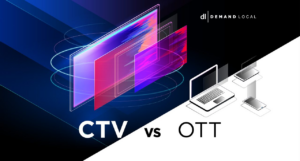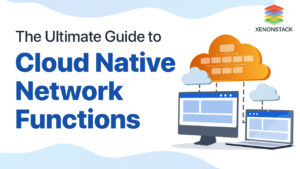The term “cord nevers” refers to a growing segment of consumers who have never subscribed to cable or satellite TV. Instead, these consumers rely entirely on internet-based services for video entertainment.
Cord Nevers represents an important shift in how people, especially younger generations, consume media. Their viewing habits and expectations are very different from the traditional cable TV model.
Understanding cord nevers provides insight into the future of television as content consumption continues moving online.
With cord-cutting on the rise, cord nevers will play a key role in shaping the video entertainment landscape in the years ahead.

Who are the cord nevers?
Cord Nevers are consumers who have never paid for cable or satellite TV service. Unlike cord-cutters who canceled their cable subscriptions, cord-nevers have relied solely on internet-based video platforms since entering the market.
They are typically younger consumers in their 20s and 30s. Millennials and Generation Z make up a significant portion of cord nevers, having grown up with on-demand streaming services like Netflix, Hulu, and YouTube.
For these younger viewers, paying for traditional cable bundles with hundreds of channels simply makes less sense than selecting their favorite streaming apps.
Without any nostalgia for legacy pay TV, cord-nevers are leading the shift to purely internet-based TV.
Why are cord nevers on the rise?
Several key factors are driving the rise of cord nevers in recent years:
- Increased availability of streaming services – Services like Netflix, Prime Video, Hulu, and Disney+ provide abundant video entertainment without cable. Their affordable subscriptions appeal to younger viewers.
- Faster broadband speeds – Higher internet speeds enable smooth streaming, making cord-cutting more viable.
- Mobile device usage – Watching video on smartphones and tablets allows for entertainment on the go.
- Cost savings – Cord never saves money over bloated cable bundles filled with channels they don’t watch. Streaming services are more budget-friendly.
- Customization – Streaming services allow users to curate their content selections á la carte. Cord never enjoyed this flexibility.
- Minimal TV usage – Younger cord nevers tend to watch less traditional TV overall, making cable less necessary.

How do cord nevers get TV and video?
Cord never access TV and movies through a combination of streaming services, digital antennas, and digital rentals/purchases.
Streaming services like Netflix, Hulu, Disney+, and Amazon Prime provide huge libraries of on-demand video content.
For live television, skinny bundles like YouTube TV or Sling TV offer a small selection of popular cable channels at reduced prices compared to cable.
Cord Nevers supplement these internet-based options with digital antennas to access free local broadcast channels.
Some also rent or purchase TV shows and movies digitally through platforms like Amazon, Apple, and Google. By mixing various over-the-top solutions, cord never can satisfy their video needs without paying for cable TV.
What are the viewing habits of cord nevers?
The viewing habits of cord nevers differ in notable ways from traditional TV subscribers:
- Less live viewing – Cord nevers tend to watch more on-demand content versus live, scheduled programming.
- Fewer channels – With skinny bundles and streaming apps, cord nevers access far fewer channels.
- More digital interaction – Their viewing involves increased interaction with apps and internet-connected devices.
- More niche content – Streaming services enable cord nevers to access niche genres like anime without cable channel packages.
- More ad avoidance – Services like Netflix and Prime allow ad-free watching, which cord nevers prefer over ad-supported cable.
- Less TV time overall – Cord nevers, especially younger ones, tend to watch less TV overall compared to older cable subscribers.
What does the rise of cord nevers mean for the TV industry?
The growth of cord nevers has major implications for the TV business:
- Accelerated cord cutting – As more consumers enter the market as cord nevers, cord cutting will increase.
- Greater adoption of streaming – Streaming services will continue dominating at cable’s expense.
- Fragmentation of content – More studios and networks will launch standalone streaming services.
- Increased mobile viewing – TV apps will cater more to smartphones and tablets.
- More personalized advertising – Targeted digital ads will surpass traditional TV commercials.
- Declining pay TV revenue – Pay TV industry revenue will face further declines requiring new business models.
- Shift from channels to apps – The streaming app will become the main interface for video consumption.

Frequently Asked Questions (FAQ)
Q1. Who typically qualifies as a cord never?
Ans. Cord Nevers are typically younger consumers, such as millennials and Generation Z, who never subscribed to cable or satellite TV. Older demographics like baby boomers are less likely to be cord nevers since they grew up with traditional pay TV services.
Q2. Don’t cord nevers miss out on live events like sports without cable?
Ans. While it’s true that streaming services don’t always offer live sports, there are options tailored for cord nevers who want to access live events. Services like YouTube TV, Sling TV, and Hulu + Live TV provide popular sports channels at lower costs than cable. Some leagues like the NFL also offer streaming subscriptions for live games. So cord nevers still have live sports options without cable.
Q3. Is it difficult for cord nevers to cut the cord if they never had cables?
Ans. Not really, since Cord never has always relied on internet-based streaming options. They don’t have to go through the process of canceling cable packages or equipment. Cord cutting refers to consumers abandoning their cable or satellite subscriptions in favor of streaming. But for cord nevers who never had those subscriptions, the transition is often seamless.
Q4. How do you never watch local TV station channels?
Ans. Cord nevers have a few options for accessing local broadcast stations without cable: 1) Using a digital antenna to get free over-the-air signals, 2) Subscribing to a skinny bundle like YouTube TV or Hulu + Live TV that includes major local channels, or 3) Watching local newscasts streamed for free on the station’s website or app. With those solutions, cord nevers can view local programming.
Q5. Will cord nevers eventually replace cord cutters?
Ans. Cord nevers will likely outnumber cord cutters over time. As fewer households continue signing up for cable in favor of streaming services, most new TV customers will start as cord nevers. The influx of younger cord nevers will surpass cable-cutting among older demographics. So the cord-never category should represent a growing segment of the TV audience in the future.



